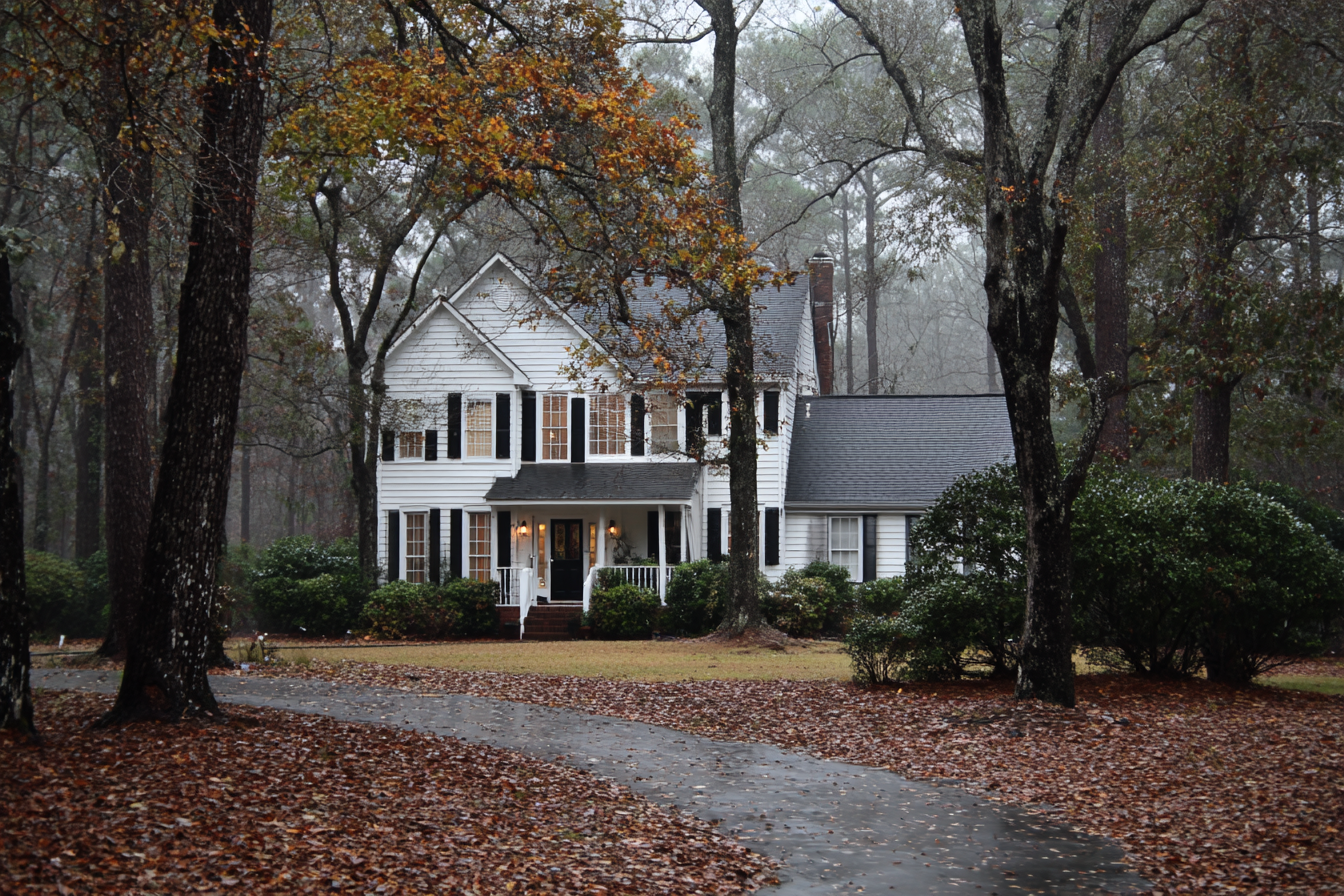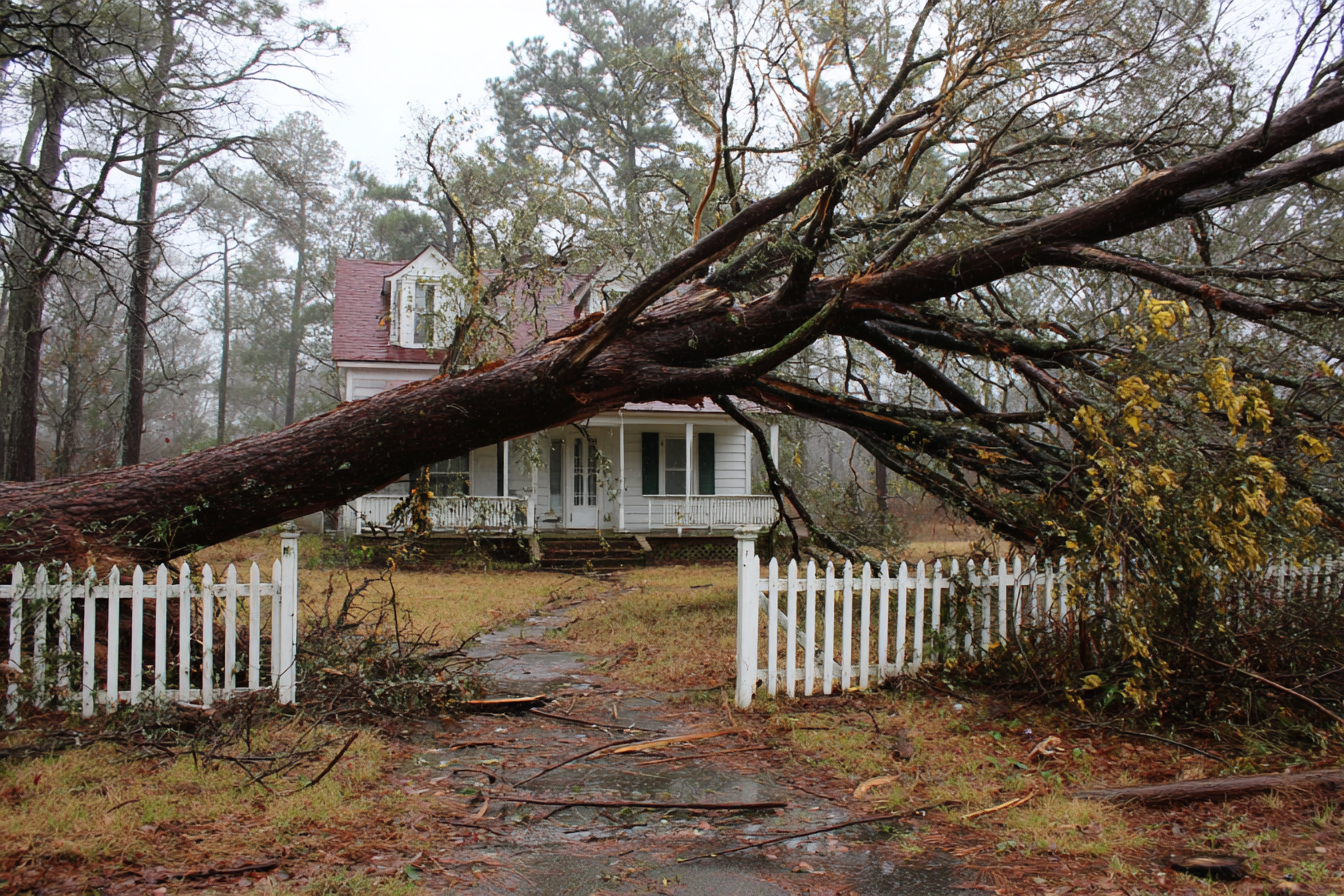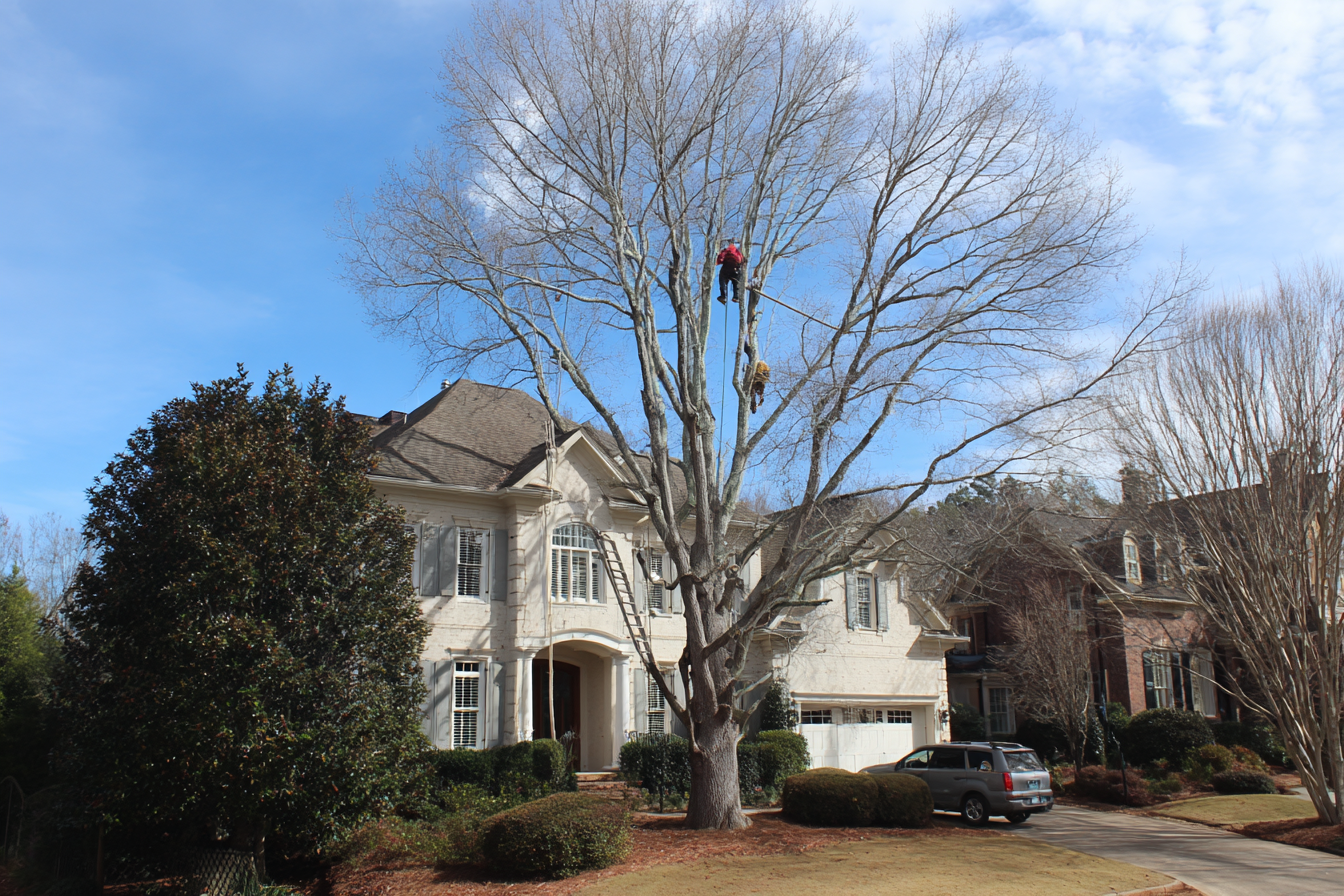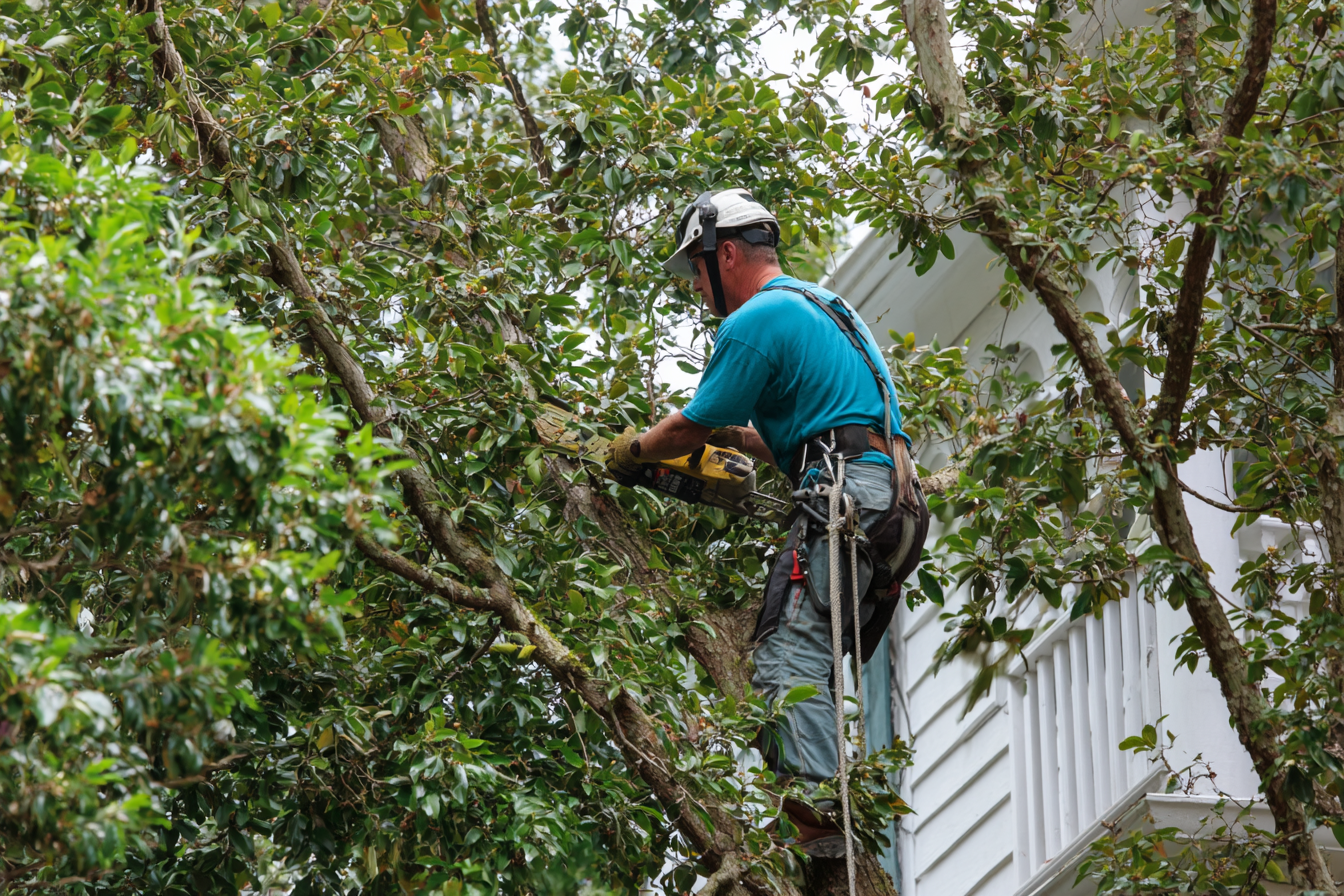
Georgia's landscape is defined by its beautiful, sprawling trees. From the majestic oaks of the North Georgia mountains to the towering pines of the Coastal Plain, these trees add immense value and character to our properties. However, as any Georgian knows, our state is also no stranger to severe weather. From powerful thunderstorms and tornadoes to the remnants of hurricanes, our trees are regularly put to the ultimate test. While a healthy tree can stand tall against a storm, a compromised or high-risk tree can quickly transform from a backyard asset into a dangerous liability.
The question isn't just about aesthetics; it's about safety and liability. A fallen tree can cause catastrophic damage to homes, vehicles, and utility lines, not to mention the risk of injury. In Georgia, understanding your responsibility as a property owner is crucial. You could be held liable for damages if a fallen tree from your property was found to be dead, diseased, or otherwise hazardous before the storm. This is why being able to identify a high-risk tree is a fundamental part of responsible homeownership.
This guide will walk you through the key indicators of a hazardous tree and highlight some of the specific tree species in Georgia that are more susceptible to storm damage. By the end, you'll have the knowledge you need to protect your home and loved ones from a potential tree-related disaster.
What Makes a Tree a Potential Liability?
A tree becomes a liability when its structural integrity is compromised, posing a risk to a "target," which could be your house, car, a neighboring property, or even a person. The presence of a potential target is a key part of a tree risk assessment. A dead tree in the middle of an open field is far less of a liability than a slightly leaning tree hanging over your bedroom.
Several factors contribute to a tree becoming a hazard. These can be related to the tree's health, its physical structure, and its environment. A tree that has been weakened by disease or pests, for example, may not have the strength to withstand high winds. Similarly, a tree with a compromised root system can be easily uprooted when the ground becomes saturated during heavy rain.
It’s important to remember that not all tree failures are dramatic. A tree doesn't have to completely topple over to be a hazard. A single, large, dead limb hanging precariously over a walkway can be just as dangerous. A proper assessment considers the entire tree, from the roots to the topmost branches, to determine its overall risk level.

How Can I Spot the Signs of a Hazardous Tree?
Identifying a hazardous tree is often about paying close attention to visual clues. While a professional arborist is the only person who can provide a definitive assessment, knowing what to look for can help you decide when it's time to call in an expert.
- Dead or Dying Branches: Look for limbs that have no leaves, or leaves that are discolored, wilted, or shedding prematurely. Dead branches can become brittle and easily snap off in high winds.
- Cracks or Splits in the Trunk: Any significant crack in the trunk, especially if it extends deep into the wood, indicates a severe structural weakness. This is a major red flag that the tree could split and fail at any time.
- Leaning: While some trees naturally lean, a new or rapidly increasing lean is a sign of a compromised root system. Look for cracked or disturbed soil around the base of the tree, which indicates the roots are pulling away from the ground.
- Fungal Growth: The presence of mushrooms, conks, or other fungi growing on the trunk or around the base of the tree is a strong indicator of internal decay. Fungi feed on dead or decaying wood, which can hollow out the inside of a tree and make it extremely weak.
- Weak Branch Unions: Pay close attention to how branches attach to the trunk. V-shaped unions are inherently weaker than U-shaped unions, and they often have "included bark"—where bark grows inside the joint, preventing a strong connection.
- Hollow or Decayed Areas: Look for cavities or large holes in the trunk or major limbs. These are clear signs of internal decay. Even if the outer bark looks healthy, a significant hollow area can make the tree a ticking time bomb.
- Pest Infestations: Holes in the bark, sawdust at the base, or tunnels under the bark are signs of a pest infestation. Pests like boring beetles can severely weaken a tree from the inside out.
Regularly inspecting your trees, especially after a storm, can help you catch these problems early.
Which Georgia Tree Species Are Most Prone to Storm Damage?
While any tree can suffer storm damage, certain species in Georgia are more susceptible due to their growth patterns, wood density, or root systems. Knowing these species can help you prioritize which trees on your property might need a closer look.
- Loblolly Pine (Pinus taeda): As one of the most common pines in Georgia, the Loblolly Pine is a frequent victim of high winds. Its dense canopy can catch the wind like a sail, and it's more susceptible to breakage and uprooting compared to other pines.
- Bradford Pear (Pyrus calleryana): The Bradford Pear is infamous for its weak, V-shaped branch unions. While they grow quickly and have beautiful spring blossoms, their poor structure makes them highly prone to splitting apart in even moderate winds or under the weight of ice.
- Leyland Cypress (Cupressus × leylandii): Often used for privacy screens, Leyland Cypress trees are fast-growing but have a shallow root system. This makes them particularly vulnerable to uprooting during a storm, especially in saturated soil. Their dense foliage also acts as a wind sail.
- White Pine (Pinus strobus): The White Pine has a less robust wood structure compared to other pines. Its long, slender branches and high crown can make it prone to breakage from high winds or heavy ice loads.
- Willow Oak (Quercus phellos): While oak trees are generally considered strong, Willow Oaks can develop structural issues. They can be prone to having co-dominant stems and narrow branch angles, which can lead to splitting in a storm. Proper pruning and care are essential for these trees.
It's crucial to remember that a tree's health and location are often more significant than its species. A healthy Bradford Pear may fare better than a diseased oak.
Does Georgia Law Hold You Liable for a Fallen Tree?
This is a question many homeowners have, and the answer, like tree law itself, can be complicated. In Georgia, the general rule is that if a healthy tree falls due to a severe storm, an "Act of God," the owner of the tree is not liable for the damage it causes to a neighbor’s property. Instead, the neighbor’s homeowner's insurance would typically cover the damages.
However, there is a very important exception. If a tree owner "knew or reasonably should have known" that the tree was dead, diseased, or otherwise hazardous, and failed to take reasonable steps to address the issue, they could be held liable for damages. This is where documentation and professional assessments become critical. For example, if your neighbor sent you a certified letter warning you about a large, clearly decaying limb on your tree that was hanging over their driveway, and you ignored it, you could be found negligent if that limb later falls and damages their car.
This is why a proactive approach is always the best strategy. By having your trees professionally inspected and addressing any identified hazards, you are not only protecting your own property but also fulfilling your legal responsibility and protecting yourself from potential lawsuits.
How Can a Professional Tree Service Help Mitigate Your Risk?
Taking a proactive approach to tree management is the most effective way to protect your property and avoid legal and financial headaches. A professional tree service, like Georgia Pro Tree Services, offers a range of services designed to mitigate these risks.
- Tree Risk Assessment: Certified Arborists can perform a comprehensive, on-site inspection of your trees to identify structural defects, signs of disease, and other potential hazards that might not be obvious to the untrained eye. They can also provide a detailed report and a plan for action.
- Strategic Pruning and Trimming: Professional pruning isn’t just about aesthetics; it’s about improving the tree's health and stability. Removing dead, weak, or crossing branches reduces the risk of them breaking off in a storm.
- Hazardous Tree Removal: For trees that are deemed a high risk and cannot be saved, professional removal is the only safe option. Tree removal is a highly dangerous job that requires specialized equipment and expertise to ensure the tree comes down safely without damaging nearby structures.
- Emergency Services and Debris Cleanup: After a storm, a professional team can quickly and safely remove fallen trees and debris, clearing your property and preventing further damage.
Working with a reputable, insured, and experienced company is paramount. A professional tree service has the knowledge and equipment to handle these tasks safely and efficiently, giving you peace of mind that your property is in good hands.

Conclusion
Don’t wait for the next storm to ask, "Is my tree a liability?" Taking the time to assess the trees on your property and recognize the warning signs of a hazard is a crucial step in responsible homeownership. By understanding which species are more susceptible to storm damage and how to identify a compromised tree, you can take a proactive stance.
Remember, a tree risk assessment from a professional arborist is an investment in your safety and a shield against future liability. Protect your home and your peace of mind by acting now.
Ready to ensure your trees are an asset, not a liability?
FAQs about Storm Damage Prone Tree Species
Q: How much does a professional tree risk assessment cost?
A: The cost of a professional tree risk assessment varies depending on the number of trees and the complexity of the assessment. Many tree service companies, including Georgia Pro Tree Services, offer a free initial consultation or estimate to discuss your concerns. A certified arborist will provide a detailed report and recommendations, which may come with a separate fee. The cost is often minimal when compared to the potential financial and emotional cost of storm damage.
Q: Can I just trim my trees myself?
A: For small, non-hazardous limbs, minor pruning can often be a do-it-yourself job. However, for any large limbs, especially those near power lines or structures, it is highly recommended to hire a professional. Improper pruning can seriously harm the tree's health and even make it more susceptible to disease and storm damage. Professional arborists have the training and equipment to perform these tasks safely and correctly.
Q: What if a neighbor's tree is a hazard and threatens my property?
A: The first step is to document the issue. Take photos of the tree's condition and keep notes on any visual signs of decay or damage. Next, you should politely and formally notify your neighbor in writing, preferably with a certified letter, of your concerns. This creates a legal record. If they fail to address the issue, and the tree later falls and causes damage to your property, this documentation can be crucial for a legal claim. In some cases, you may be able to trim back a neighbor's tree to your property line, but you must not harm the tree in the process. Consulting with a professional and a legal expert is the safest course of action.
Q: How do I know if a tree service company is reputable?
A: When hiring a tree service, always check for the following:
- Insurance and Licensing: Ensure they have liability insurance and workers' compensation. This protects you from being held responsible if a worker is injured on your property.
- Certifications: Look for companies with Certified Arborists on staff from reputable organizations like the International Society of Arboriculture (ISA).
- References and Reviews: Check for customer testimonials and reviews on platforms like Google, HomeAdvisor, and Yelp to gauge their reputation and quality of work.
Written Estimates: Always get a detailed, written estimate that outlines the scope of work, cost, and a timeline.

We're your local tree pros!
Georgia Pro Tree Services takes the highest quality of care when servicing your trees. Call us to find out how we can help you keep your yard in top shape.



